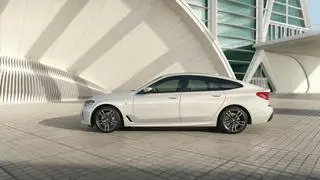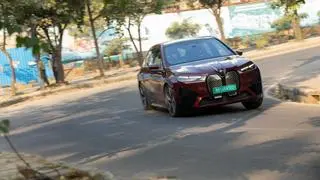The Honda Navi may not have set sales charts afire in India but this cross between a scooter and mini motorcycle has caught the imagination of customers in other parts of the world.
“The good part about Navi is on the exports front where we are doing over 1,000 units each month, says YS Guleria, Senior Vice-President (Sales & Marketing), Honda Motorcycle & Scooter India. “Within Honda group globally, everyone is impressed with the product be it Latin America, Nepal or Sri Lanka where distributors are asking for samples and accessories.”
Cheap and trendyAccording to him, Navi buyers in these countries like the product for its funky looks and it represents a completely different concept in two-wheelers while being easy on the wallet. “Some of these countries may be smaller than India but in terms of style, they are far trendier markets,” says Guleria.
Launched at the 2016 Delhi Auto Expo, the Navi was one of the star attractions at the event thanks to its funky looks and attractive pricing. Despite that, not everyone in the industry was convinced that it reflected Honda’s prowess as a global two-wheeler giant. There was an initial surge at dealerships with people curious to know more about the product but sales eventually tapered off to modest numbers of a few thousands each month.
Understanding Indian mindsetYet, Guleria believes that the lessons learnt from the Navi were quite valuable. It helped the company understand that Indian buyers are open to the idea of customisation and optional parts so long as the acquisition cost of a product is relatively low.
Customers at this price point are largely commuter bike riders who need a two-wheeler for getting to work and back. As Guleria says, they are not “pure enthusiasts” but look at a bike as a need-based purchase. Consequently, they will not spend more money to make it funky.
“To press the trigger for customisation, the base value should be very nominal and they can experiment this without burning a hole in their pockets,” he says. The Navi showed that this was possible but where Honda slipped up a bit was not being quick enough to provide optional parts from Day 1.
“The other learning for us was to follow a step-by-step approach for products like Navi,” says Guleria. “It is important to understand the market thoroughly where the vehicle is launched first before entering other regions.”
Both lessons have come in handy for Honda’s more recent offering, Cliq, which has debuted in just three markets – Rajasthan, Maharashtra and Tamil Nadu – before making its presence across the country by the end of this month.
The company was also confident that a lot of women would queue up for the Navi since it offered them the chance of riding on an automatic motorcycle of sorts. Guleria says there was an initial rush and, at one point in time, women buyers for Navi took up nearly 25 per cent of total numbers before this tally began slipping.
Yet, he believes that there have been some encouraging feedback coming in from places like Goa where bike taxi operators have taken this funky product in a big way. Tourists coming in from other countries find it colourful and attractive while young couples are happy to take it out for a spin while soaking in the sun.
Guleria admits that the Navi evokes extreme reactions and one ends up either liking it or giving it the cold shoulder. Honda was also prepared for this feedback from the market but was keener on gauging customer response and putting these lessons to good use for the recently launched Cliq scooter.
Pleasant surprise“We are happy in terms of lessons learnt from the Navi though we would have obviously liked more numbers,” he says. However, exports have helped offset the tepid response in India, which by itself was a “pleasant surprise” for Honda and also kept its business plan steady as a result. “As long as our manufacturing lines for the Navi are full, nobody is complaining,” says Guleria.
Overall two-wheeler exports from India have been rising for Honda especially in the South Asia region and could get a further fillip from 2020 when Bharat Stage VI emission norms kick in. By the time, India could end up becoming the hub for shipments to ASEAN, Europe and Japan.








Comments
Comments have to be in English, and in full sentences. They cannot be abusive or personal. Please abide by our community guidelines for posting your comments.
We have migrated to a new commenting platform. If you are already a registered user of TheHindu Businessline and logged in, you may continue to engage with our articles. If you do not have an account please register and login to post comments. Users can access their older comments by logging into their accounts on Vuukle.